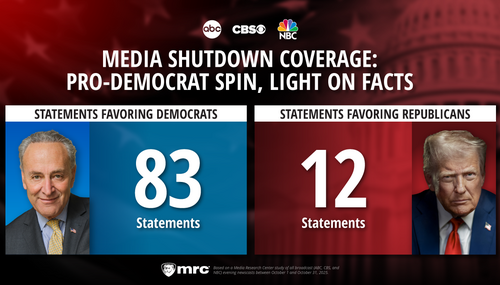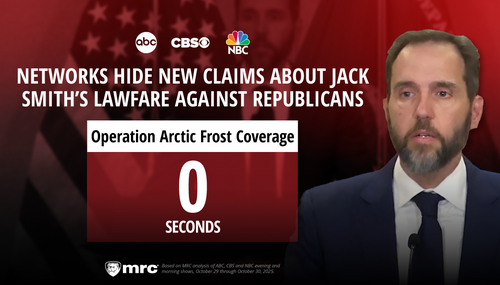Preparing the battlespace for tomorrow's report from the government on third-quarter Gross Domestic Product growth, the Associated Press's Martin Crutsinger early this aftenoon told readers that we're likely to see "a subpar pace by any standard."
But we shouldn't worry, because the AP reporter contends that tomorrow's news will just be a temporary trough in this year's "dizzying roller coaster ride," and that the fourth quarter will once again bring the economy up to acceptable heights. To make his claim, Crutsinger naturally ignored myriad warning signs that a serious slowdown may be on the horizon. A decade ago, he was hyping other far less serious factors as evidence that the economy would be lucky to avoid a recession.
Here are excerpts from Crutsinger's report (saved here for future reference, fair use and discussion purposes; bolds and numbered tags are mine):
US ECONOMY LIKELY CRAWLED LAST QUARTER BUT OUTLOOK BRIGHTENS
The U.S. economy has resembled an especially dizzying roller-coaster ride this year, with a hurtling dive followed by a steep climb leading to yet another slide.
On Thursday, when the government issues its first of three estimates of growth in the July-September quarter, it's expected to show an economy slumping from global weakness and reduced corporate stockpiling - but poised to rise again. [1]
Economists' consensus forecast, according to FactSet, is that the economy eked out just a 1.7 percent annual growth rate last quarter, a subpar pace by any standard. [2]
"We got a lot of weakness during the summer from a widening of the trade deficit and a drawdown of inventories," said Mark Zandi, chief economist at Moody's Analytics. "But I think the consumer will lead the way to stronger growth in the fourth quarter." [3]
... true to the pattern this year, economist think the summer slowdown will be followed by an acceleration in the final three months of the year. For the year, after all the ups and down, the economy is expected to expand around 2.3 percent, close to 2014's modest 2.4 percent growth.
... Most (economists) also think the weaker job growth of the past three months will prove temporary and that hiring will accelerate in the final months of this year [4] to the pace that preceded the summer drop-off.
If so, that would put consumers in more of a mood to spend during the holiday shopping season. [5] Also helping will be the renewed decline in energy prices, which is giving consumers more money to spend on other goods and services.
Macroeconomic Advisers predicts that growth in the October-December quarter will rebound to an annual rate of around 2.7 percent. Zandi is even more optimistic: He foresees annual (fourth-quarter) growth of around 3.5 percent this quarter, with the momentum carrying into 2016. [6]
Notes:
[1] — There are quite a few reasons to believe that the economy isn't poised to rise again in the fourth quarter. Just one (others will be discussed in later notes) includes the job market, where the two-month slump is predicted to hit three months next week. Yahoo's Economic calendar is carrying a prediction of 142,000 additional seasonally adjusted payroll jobs — way below the 200K-plus needed to sustain the mostly mediocre performance since the recession.
[2] — Ten years ago, Crutsinger was lowballing economic expectations as quarterly growth consistently came in at an annualized 3 percent or greater. If he was consistent, he would currently note the 1.1 percent prediction at the Atlanta Fed, which correctly pegged last quarter's initial number, and the 0.8 percent prediction at Moody's. But he didn't. There's a Democrat in the White House.
[3] —The nation's retailers aren't counting on consumers to save the economy in the fourth quarter. The National Retail Federation's Christmas shopping season forecast is for a 3.7 rise over last year. If they're correct, that would be lower than last year's 4.1 percent, when fourth-quarter growth in the whole economy was only an annualized 2.1 percent.
[4] — As noted in Item [1], forecasters believe that we're going to have to wait until at least November for that hiring acceleration.
[5] — As noted in Item [3], that's not what the National Retail Federation believes at the moment.
[6] — Moody's Zandi has been insufferably overoptimistic for several years now, assuring us that consistent annualized growth of over 3 percent is just over the horizon. It hasn't happened yet, but he keeps on predicting that it's coming. His fourth quarter 3.5 percent prediction ignores a list of negative influences so large I can't hope to identify them all. But here are a half-dozen:
- August's final and September's advance durable goods reports showed a combined decline of 4.2 percent, and year-over year declines for the past eight months. Fourth-quarter advances would have to be quite impressive to break that losing streak — and the current numbers make one wonder how rest of this year's GDP figures have been positive at all.
- New home sales dropped steeply in September, and July and August were both revised downward. There is a disconnect between builder sentiment, which is quite high, and reality, which appears to be presaging flatness at best.
- Compared to the 142,000 jobs gained in the Labor Department's national jobs report released on October 2, last week's regional and state jobs report showed 21,000 seasonally adjusted jobs lost in all 50 states and DC combined. That 163,000-job difference may be a harbinger of a more serious slowdown in employment growth than even the current mediocre predictions for October would indicate. Based on the large state vs. national difference noted here, it's impossible to rule out a decline.
- Industrial Production as tracked monthly by the Federal Reserve has mostly shown declines.
- Manufacturing and trade sales have shown year-over-year declines for the past eight straight months. Even after considering price drops in the petroleum sector, the performance has been flat. The decaying situation in the shipping industry (trucks, rail, and air) would seem to indicate that we're not going to see any kind of meaningful improvement in this area. How one gets positive GDP from all of this remains a mystery.
- Seasonally adjusted retail sales only rose by a combined 0.1 percent in August and September.
On October 14, seemingly without any basis, Zandi claimed that "consumers are spending with as much gusto as they have since before the Great Recession." Huh? Besides buying cars, an act which any more usually requires no immediate spending, where is this "gusto" present? Zandi also cited "health care" as an area of increased spending. This is because people are having to spend more money out of their own pockets thanks to more restrictive Obamacare and employer-based plan designs. It certainly isn't something they want to do, and it doesn't represent an improvement in Americans' standard of living.
The half-dozen items I've listed only scratch the surface of troubling data points.
But for now, the AP's Crutsinger is pretending that we're on our way back up to the roller coaster's peak. That's not supposed to be his job, but he's glad to do it anyway — as long as a Democrat remains in the White House.
Cross-posted at NewsBusters.org.




